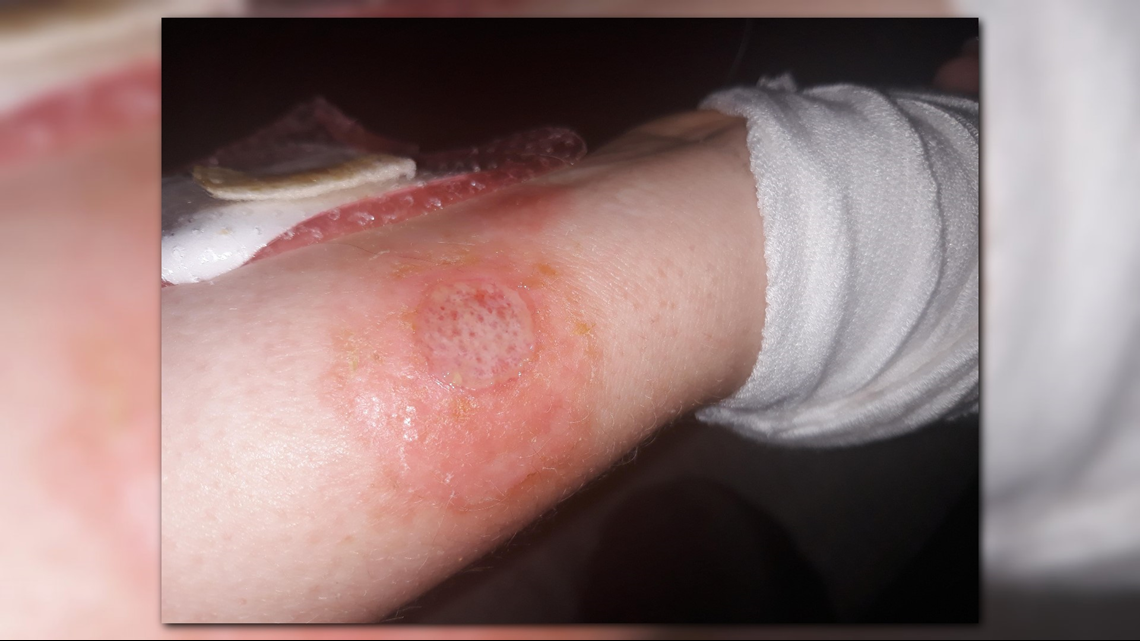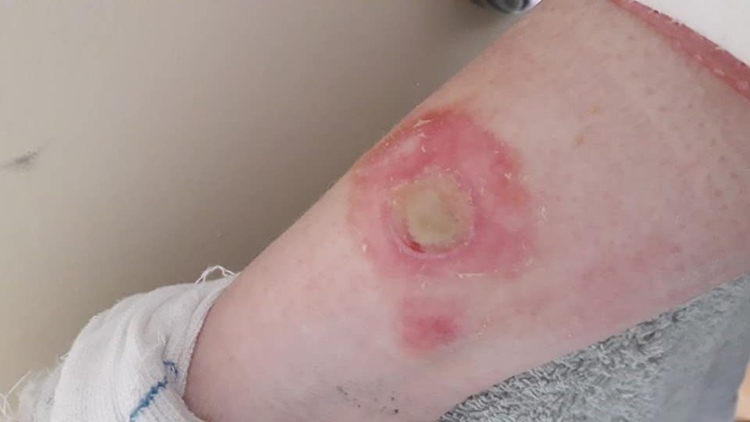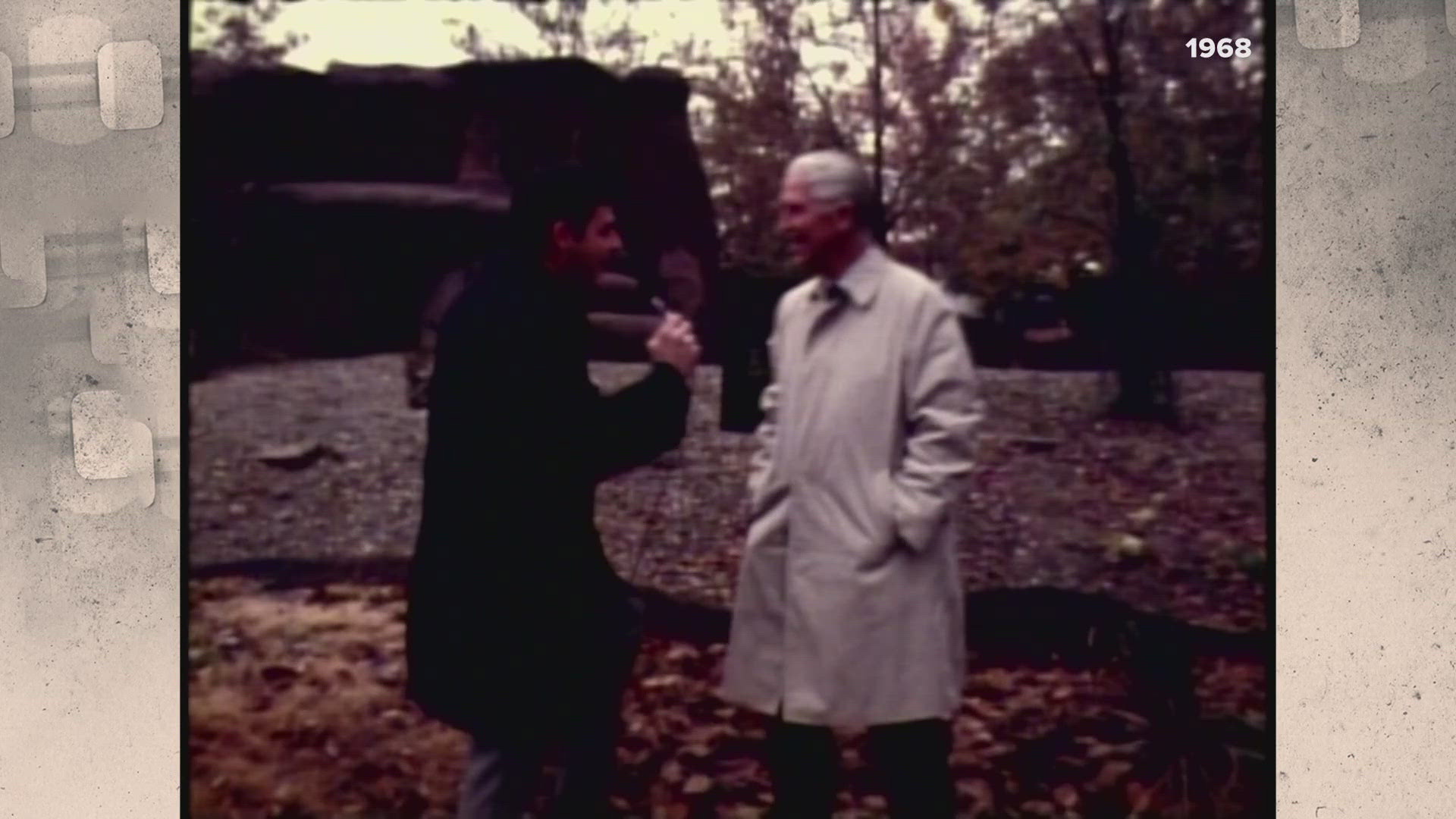QUESTION:
Can deodorant be abused to cause severe burns?
ANSWER:
Sadly, yes. It's a teen trend you should watch out for called the "Deodorant Challenge" where kids see how long they can tolerate deodorant being sprayed in the same spot. Even seconds can cause second degree burns and permanent scarring, experts say.
SOURCES:
Dr. Taryn Travis- MedStar Washington Hospital Center- Burn Center
Dr. David Smart-MidValley Health Center- University of Utah
Dr. Albert Yan- Chief of Pediatric Dermatology- University of Pennsylvania
Michael Peck- American Burn Association
Tom Eagar- MIT Professor of Thermodynamics
PROCESS:
She never does this--vent online--but Jamie Prescott felt moved to help other parents talk to their children about the dangers of deodorant.
Jamie's daughter is now one of the most talked about victims of the latest teen trend: 'The Deodorant Challenge.' Kids are spraying aerosol deodorants an inch or two from their skin for as long as they can tolerate the pain.
After her Parent PSA went viral online, Verify checked in with Jamie to see how her daughter's recovery was going. Five weeks later, and the burn is far from healed.
"I want to get as much awareness out there as possible," she said.


Why can aerosol deodorant burn?
"It's essentially frostbite," dermatologist Dr. David Smart at the University of Utah said. "It causes scarring no matter how deep--the more prominent the blistering the more permanent the scarring."
Last summer the University of Utah's health center treated so many cold-induced injuries they issued a campus-wide warning: 'Don't Do It: The Deodorant Challenge.'
But the freeze effect isn't unique to deodorant--it can result from any aerosol spray. Our team combed through numerous medical journals documenting burn cases from inhalers, air fresheners, even keyboard cleaners.
That's because compressed, needs heat to expand. Without heat, the gas turns cold.
"The technical term is Adiabatic--it's a consequence of the Ideal Gas Law," MIT thermodynamics expert Tom Eagar explained. " If you expand any compressed gas, it necessarily cools down if your not heating it up at the same time."
Hence--the gas hitting your skin is cold enough to procure a frostbite.
"That is a scientific fundamental truth," Eagar said. "That would be true of hairspray if you didn't mind getting sticky."
Michael Peck of the American Burn Association says there can be a chemical component to the burn as well.
"Although each product is different, the aerosol carrier for the active compound is typically a hydrocarbon," Peck said. "For example, one well-known product on the market has inactive ingredients of butane, hydrofluorocarbon, butyl ether, isobutane, propane, pentane, and benzyl alcohol. Any of these agents, if sprayed on the skin for long enough, is chemically toxic."
So what to do if you think your child has an aerosol burn?
Dr. Taryn Travis, a burn surgeon with the Burn Center at MedStar Washington Hospital Center has the answers:
- Remove the offending agent to stop the burning
- Decontamination and rewarming are imperative. Luckily, these can be done at the same time with running warm, not hot, water. Do not rub the area. When cold injury occurs, small ice crystals form within the tissues, and rubbing these sorts of injuries can cause further trauma. Rewarm for at least 20 minutes.
- Cover the are in something clean and dry
- Seek care from a burn professional within 24 hours to avoid long-term disfigurement and disability.



